Tell us about your approach to photography. Where did it all started? What are your memories of your first shots?
Pedro Guimarães (PG): It all started the day a friend invited me to his makeshift darkroom in his parentʼs house toilet, around the year 2000. For the first time I understood what a negative was and what developing film really meant. Before that it was just a magic trick available only to commercial photo lab operators. Needless to say, I fell immediately in love with the process. I knew nothing about photography until that point. I had shot no more that a dozen of colour films until then, mostly during school trips. Developing the neg, making the print… that was something new. I never stopped shooting, developing and printing my own photographs ever since. A consciousness about what Photography is, or what is beyond the tangible materiality of photographs, that only came many many years after. I guess many of us started like this.

© Pedro Guimarães from the series ‘Selected Individual Works 2009’
Where did you study, and what are your best memories of your that time? What was your relationship with Photography back then?
PG: Well… Iʼve been educated most of my life to become sort of an engineer and take part in my familyʼs business. That almost worked out until the moment I started having second thoughts about spending the rest of my life sitting at a desk. So I kind of envisioned myself pursuing a career as a photojournalist, which led me to drop college just before graduating. I was already getting a few freelance jobs by then, collaborating with a few newspapers. It was a very important period without which I would never had the chance to develop a distance to photojournalism.
Mainly because I realised the way the industry works is by repeating the same trivialities over and over and then call it ʻrealityʼ. I got interested with this kind of problematics so I decided to go back to school and try something different, academically speaking there is. But since higher education in Photography didnʼt quite exist in my home country of Portugal, I decided to move to London to attend MA Photographic Studies at the University of Westminster in London. This was between 2009 and 2010.
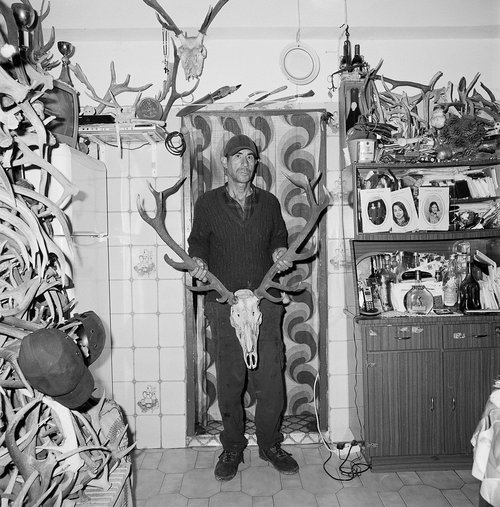
© Pedro Guimarães from the series 'Monsanto Blues’
What were the courses that you were passionate about and which have remained meaningful for you?
PG: To be honest I donʼt keep that many memories of time spent on campus. The whole London experience totally overshadowed the academic part. The people I met, the exhibitions I saw, the books I came across. I was reading a lot at the time. Mostly during my endless tube commutes. By the end, somehow, I managed to get myself a basic post-modern thinkerʼs ʻtoolkitʼ, all thanks to Londonʼs chaotic and endless underground network. But I wouldnʼt be totally honest if I omitted this module called ʻThe Text and the Bodyʼ where Iʼve been sort of encouraged to have engage in book making. My debut was to produce this huge A1 booklet with a selection of sentences taken from Jorge Luis Borgesʼ text “The Waiting” illustrated with my own photographs. This really triggered a desire to do more in terms of publishing.
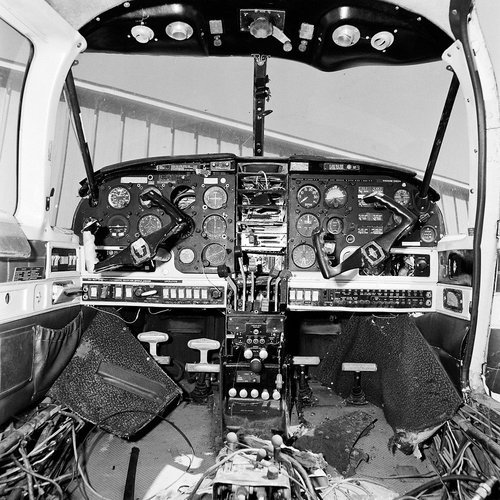
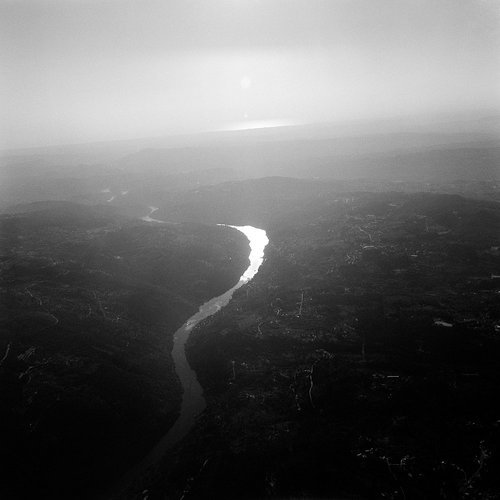
© Pedro Guimarães from the series 'How to Fly’
Was there any professor or teacher that has allowed you to better understand and improve your work?
PG: If I really have to pick a name then it would be David Bate, course leader of the MA. I like the way he writes, the sheer simplicity of his speech. Heʼs a fantastic writer also, with a number of successfully published books, addressing several topics within the fields of Art, Visual Culture and Philosophical Theory. Itʼs difficult for me to define how David Bate has influenced me… it was a very modest contribution but with a visible impact, I must say, not only on me but on all my colleagues. He has fundamentally helped me organise the matrix that constitutes my ʻphilosophical selfʼ, and that was very important, I think… He basically introduced me to the names and the key texts he thought I should know about and ʻinvitedʼ me to work on my own and make everything make sense. It was as if all the concepts and drives that already existed inside of me suddenly started to get names and faces. Some order has been brought to the house, I think, and for that I should thank Dr. David Bate.
What do you think about teaching methodology in the era of digital and social networking?
PG: I think social networking affects teaching as much as it affects all other aspects of life. Itʼs everywhere and itʼs here to stay. Schools and Universities have no option but to incorporate this trend into their communication strategies, at all levels. Personally I just get a little confused when sometimes the medium becomes more important than the message. Thatʼs why somehow I think art students instead of simply embracing the phenomenon should work more on disassembling it, turning it upside down, inside out. No one really knows whatʼs going on, right? There is still a lot of experimentation to be done in the digital realm. But if you ask me, it is not my favourite kind of problematic. I am much more old school, I prefer to ignore the internet and dig into the art and crafts of doing. With my hands and my eyes I try to embrace a closer distance relationship with the material world. I believe that true knowledge comes from interaction with the material world.
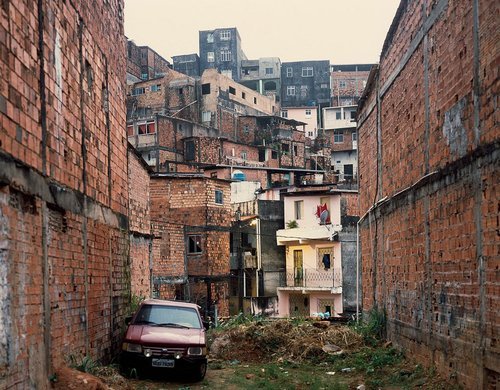
© Pedro Guimarães from the series 'Paraisópolis’
About your work now: how would you describe your personal research in general? How did it evolve from your early days working with Photography?
PG: In the early days my research was solely about watching other photographersʼ work. It was largely a period of imitation, I must say. I first got hooked on Henry Cartier Bressonʼs work, whose style I tried to emulate for some years. But then, I quickly shifted my attention this group of American photographers who became prominent around the 70s, just before I was born. The big obvious names really like Stephen Shore, Mitch Epstein, Edward Burtinsky, Joel Sternfeld or Richard Misrach, to name a few. All I knew about all these photographers were the photographs I could find in large distribution books, magazines and on the internet. I spent years and years imagining how would be the lives of these artists, just by looking at those photographs over and over again. Because of my admiration for American photography, I slowly abandoned small cameras and started using medium and large format equipment. Taking photographs became more of a process of observation rather than intuition and anticipation.
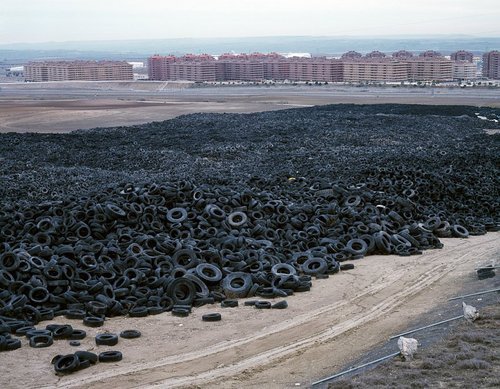
© Pedro Guimarães from the series 'Seseña Nuevo’
And then came Art School and, again, some major changes took place… Because all of a sudden I was being confronted with the reality of Londonʼs tough and competitive Art Scene I realised that in order to start a career I would have to find my own voice among the crowd and… work more than ever! But then as I was getting ready to start conquering the world a new family came into the equation. This is still having a profound impact in my life as Iʼm still learning how to deal with fatherhood. Itʼs a very long and complex process of negotiation.
Do you have any preferences regarding cameras and formats?
PG: The Hasselblad 500 and the Linhof Master Technika are my favourite tools right now. I also use a small digital pocket camera with an old Leica lens attached for commercial assignments. It a huge crop but I like it. But I do like all sorts of cameras and formats. I think glass is more important than the camera.
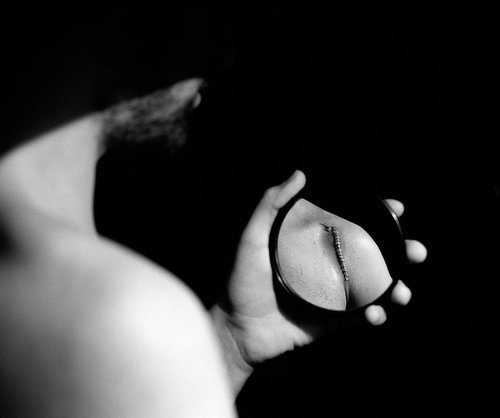
© Pedro Guimarães from the series 'Selected Individual Works 2009’
ʻValleyʼ started of as a smaller project that evolved onto something more complex. Can you talk about the process of exploration of that area? What were your main concerns?
PG: ʻValleyʼ didnʼt exactly start as a project… it was something that simply happened long after it had been shot. The starting point was a long term commissioned job where I was invited to document the vast collection of Pre-Historic heritage in Northern Portugal using a lighting technique I was developing at the time. Besides the portable studio I always had an extra 6x7 camera with b&w film with me all the times, so I started taking a few more intimate shots besides the technical digital colour work I was shooting for my client. During that period I literally lived in the woods inside an old Land Rover for more than one year and this, somehow, turned into a powerful mystical experience. The permanent presence of this very particular Pre-Historic iconography had a lot to do with it as well. Over time I started relating to the engravings I was documenting, and during these periods I worked on a personal side a project that I later called ʻValleyʼ. When I looked at my scanned negs years after I had shot them, I realised what I was looking at was the beginning of photography or, at least, the drive for human beings to permanently fix images on surfaces.
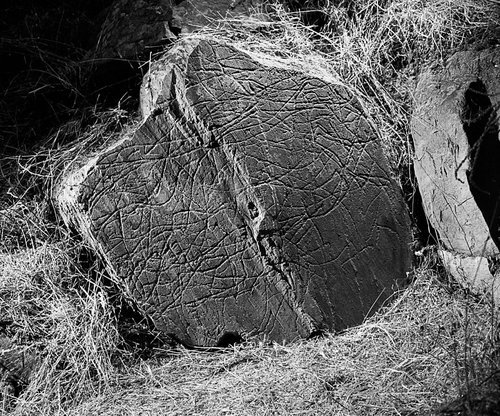
© Pedro Guimarães from the series 'Valley’
Tell us about ʻBluetownʼ
PG: ʻBluetownʼ is the real name of a place Iʼve been to in county of Kent, South East England. Itʼs just a small suburb of industrial town of Sheerness, located at the point where River Medway meets the Thames. I stopped there for a few hours. I had a meal at a local pub followed by a cheesy slow dance with a friend around my dinning table. There was this nice music in the air and the wooden walls were covered in fabric. It was way too damp and everyone at the pub was starring at us, it was such a Lynchian scene. When I drove back to London that same night I realised that experience would be the perfect metaphor for my own English experience. The name Bluetown couldnʼt suit better what I was experiencing at the time. But that was not enough, so I decided to set out to find my own ʻBluetown’.
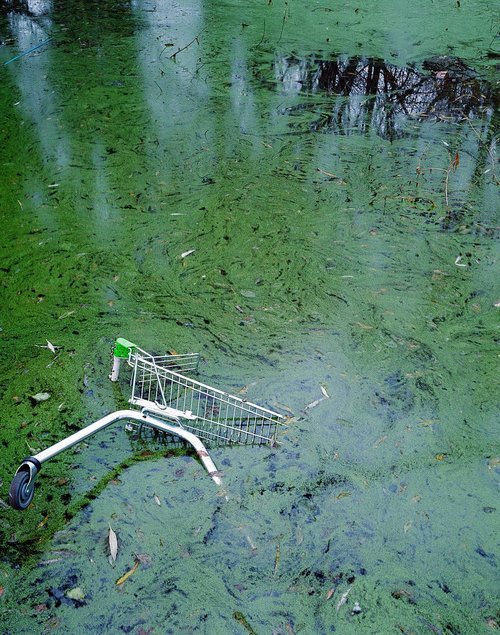
© Pedro Guimarães from the series 'Bluetown’
What followed next required some experimentation and randomness. For reasons I still cannot explain, I started by superimposing the face of the Queen Elizabethʼs face on Londonʼs map. I then laid one hundred spots along the outline, as in a “connect the dots” childrenʼs game, and drove all the way to each of the connecting dots with the help of a GPS. On each location I exposed a single 4x5 plate. In the end I made a self-published book, almost a kind of newspaper, featuring a selection of plates. I also produced a series of large and medium scale prints that Iʼve exhibited at Ambika P3 gallery as part of my MA graduation group show. I thought this was the best way to tell the English what I thought of them. Some liked, some hated it. There was this man thaw was really upset with what my photographs were trying to tell.
Is there any contemporary artist or photographer, even if young and emerging, that influenced you in some way?
PG: Edward Hopper with his good paintings and David Lynch with his bad paintings (and astonishing movies.)
Three books of photography that you recommend?
PG: Even if not technically a photography book, I would like to refer a recent addition to my bookshelf called ʻAircraftʼ, by Le Corbusier, published in 1935. I would then other great books that just came to mind: Trine Søndergaars and Nicoli Howaltʼs ʻHow to Huntʼ and Daisuke Yokotaʼs ʻLingerʼ.
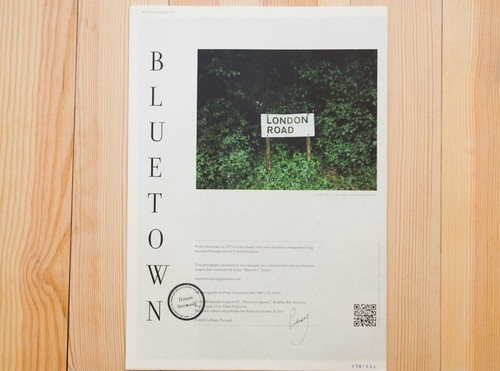
© Still of 'Bluetown’ selfpublished by Pedro Guimarães in september 2010 in a limited edition of 500 high-quality newspapers, manually signed and numbered by the artist.
Is there any show youʼve seen recently that you find inspiring?
PG: Last time Iʼve been to a show that really touched my heart was Jim Goldbergʼs ʻOpen Seeʼ back in 2009 at the Photographers Gallery in London. It was a long time ago, I know. I havenʼt been much to shows lately. Iʼm digging into photo books right now.
Projects that you are working on now and plans for the future.
PG: Right now Iʼm working on translating ʻHow to Flyʼ into a book. I expect to spend the next few months wondering how to do this.
---
LINKS
Pedro Guimarães
Portugal
share this page